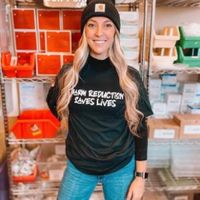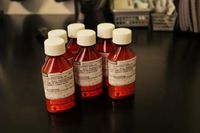Since 2014, Newfoundland and Labrador has had 2,843 overdose hospitalizations and 181 overdose deaths. Although these numbers look different from a national perspective, it is important to take into consideration the provincial population, as well as underreporting of overdoses in our province. Out of these 181 overdose deaths, 124 were a result of accidental poisoning. Stigma continues to deter individuals from calling 911 in the event of an overdose, which ends up being fatal. Most importantly, each one of these numbers represent a human life; a loved one, a sibling, a parental figure, a neighbor, a co-worker, and a fellow Newfoundlander and Labradorian.
In the latest fiscal year, ending on March 31, 2020, The Safe Works Access Program (SWAP) distributed 884,749 needles, noting a large increase from years prior. Demand for safer inhalation supplies also increased and the SWAP program began providing supplies such as bowl pipes, which were highly requested by those who smoke crack cocaine, methamphetamine, or marijuana. Since December 2016, at least 3,706 naloxone kits have been distributed throughout the province, with almost 3,000 given out in the Eastern region (Avalon Peninsula) alone. Given the current public health guidelines and exemptions, and the identified needs within the province as it relates to people who use drugs (PWUD), the Provincial Opioid Dependence Treatment Center of Excellence and the AIDS Committee of Newfoundland and Labrador (ACNL) established a partnership to conduct a Harm Reduction Site Needs Assessment.The objectives of this Harm Reduction Site Needs Assessment included: determining the need for a harm reduction site in the city of St. John’s; recommended location and model type (integrated, stand-alone, or mobile); involving the community, PWUD, and various other stakeholders in consultation and discussions about drug use in St. John’s Metro; and informing current and emerging harm reduction services in St. John’s that are acceptable, accessible, and appropriate for PWUD in the local context. The methodology used for this needs assessment was a mixed methods approach that used both quantitative and qualitative components and surveys were completed online or by paper copy, requiring approximately 10 minutes in duration. PWUD were offered a 20-dollar cash honorarium supplied by the ACNL.
Engaging with PWUD as the experts when completing this specific needs assessment was top priority, as these individuals have valuable insights and innovative ideas regarding experiences or barriers to accessing services, and navigating health, community, and social support services. It was also crucial that anyone who wanted to complete the needs assessment was respectfully allowed to decline participation at any point in time throughout the process or could choose to not answer or skip any of the questions. 56 of our respondents were currently incarcerated at the time of survey completion, which additionally resulted in recommendations for the provincial justice system. By partnering with the Addiction’s Coordinator within the local penitentiary, we were able to reach and include a vulnerable population whose voices are rarely heard.
While collecting the survey responses, we were able to get a better understanding about services that, both PWUD and care providers alike, would like to see in our province. Some of these highlighted points included:
-
Respondents indicated that they have injected substances in various places outside the home, including abandoned buildings, stairwells, parking lots, and in alleys or laneways.
-
42% of respondents indicated that they needed help injecting substances either all the time or some of the time.
-
While 87% of respondents indicated that they had heard of the take home naloxone program, 75% of respondents still indicated that they did not carry one. 22% indicated they did not know where to obtain a kit, and 15% did not feel they needed a kit, or were never offered a kit.
-
64% of the respondents indicated they would use a harm reduction site, with 19% indicating that they would use it daily. 70% of those who indicated that they would use this site, identified they would use it for overdose prevention.
-
While alcohol and marijuana were the two substances used the most, it is important to note that cocaine was the third most used substance and the number one illicit substance used.
Based on the results of the needs assessment, we proposed 6 recommendations for establishing a UPHNS:
-
St. John’s would benefit from the implementation of one or more harm reduction sites. One site could provide multiple services or multiple sites could provide select services such as: needle and safe works distribution, overdose prevention and response, HIV & HCV testing, connection to ODT treatment, access to counselling and harm reduction education.
-
The location of the site should be in the Downtown/City Centre area of St. John’s to accommodate emerging trends and integration with other services in the same area that already provide harm reduction services.
-
Harm reduction services should be considered for areas outside of St. John’s. In areas where a physical harm reduction site cannot be established, mobile harm reduction services should be considered for more comprehensive access to PWUD.
-
Naloxone kits and training should be made more accessible for PWUD. While it is unclear why some folks choose not to carry a naloxone kit, increasing access to naloxone kits and training could increase the number of PWUD who avail of this service.
-
Harm reduction efforts need to focus on all substances.
-
Although many survey respondents indicated that they use substances classified as “opioids,” an even greater number of respondents indicated that they use substances not classified under opioids.
-
Data, including health outcomes, should be collected when establishing a harm reduction site to ensure proper evaluation and monitoring. Best practices indicate that proper evaluation and monitoring is crucial to the success, effectiveness, and potential growth of a harm reduction site.
Since completing the needs assessment, our Minister of Health and Community Services has received and reviewed the results of the needs assessment and our recommendations and believes it provides ample feedback and evidence for the need of a harm reduction site. Due to time constraints and the COVID-19 pandemic, a feasibility study has not yet been conducted. Therefore, our next step as an organization is to conduct a feasibility study of a UPHNS by January 2021 and determine the associated budget/cost.
Although we are writing this blog post, we would be remiss not to mention the people who were a part of the needs assessment process from the beginning. It is because of their kindred spirits and commitment to a healthier and safer future for PWUD in our province that it is possible to take these next steps to bring this future to fruition.
References for further reading:
Mullin, M. [2020, May 15]. N.L. eyeing safe drug sites as pandemic spawns ‘lethal combination’ of risks. cbc.ca/news/canada/newfoundland-labrador/nl-overdose-prevention-sites-1.5569545
Walsh, A. [2020, August 1]. Pandemic shifts how harm reduction works in N.L., as need continues despite COVID-19. cbc.ca/news/canada/newfoundland-labrador/covid-addictions-naloxone-1.5667407
Robinson, A. [2019, December 15]. Naloxone kits one part of battle in Newfoundland and Labrador against opioid overdoses. thetelegram.com/news/local/naloxone-kits-one-part-of-battle-in-newfoundland-and-labrador-against-opioid-overdoses-388484/
The study team included: Jane Henderson B.A., B.Ed., M.A, Provincial Harm Reduction Consultant, Provincial Opioid Dependence Treatment Center of Excellence; Alexe Morgan BSW., RSW, Harm Reduction Project Coordinator, AIDS Committee of Newfoundland and Labrador; and Nyasha Razemba MPH (Candidate), B.Sc Master of Public Health Candidate, Faculty of Medicine, Memorial University Practicum Student, Provincial Opioid Dependence Treatment Center of Excellence.




